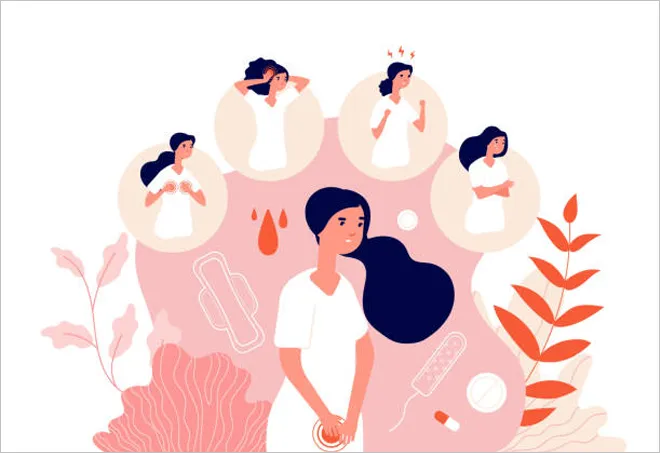
According to the World Health Organistaion, around the world, 1.8 billion women menstruate every month, yet at least 500 million of them—mostly in developing countries—lack the knowledge and means to manage their menstrual health safely and with dignity. For example, while 25 percent of women in Nigeria lack adequate privacy for Menstrual Hygiene Management (MHM) and only 6 percent of schools in Bangladesh provide education on MHM. Period poverty—defined as the lack of understanding of menstruation and necessary sanitation—is widespread. For example, in India, according to a study by UNESCO and P&G (2021), with 40 crore menstruating women, less than 20 percent use sanitary napkins compared to a significantly higher number (65 percent) using cosmetic products such as lipsticks. The same study revealed that 71 percent of adolescent girls remain unaware of menstruation until their first menstrual cycle, affecting their health, confidence, and self-esteem.
Without considering the need for safe and dignified menstruation, the world cannot achieve the vision for sanitation and hygiene under SDG 6.
Women and girls’ access to menstrual health and hygiene is a
component of gender-responsive Water, Sanitation, and Hygiene (WASH) services. Moreover, SDG 6.2 acknowledges the right to menstrual health and hygiene, with the explicit aim to, “achieve access to adequate and equitable sanitation and hygiene for all and end open defecation, paying special attention to the needs of women and girls and those in vulnerable situations, by 2030”. Without considering the need for safe and dignified menstruation, the world cannot achieve the vision for sanitation and hygiene under SDG 6.
Given the focus on gender equity in every subject, from education and job to health and environment, this crisis is appalling. Adolescent girls and women face stigma, harassment, and social exclusion based on menstruation. It affects their mobility, restricts personal choices, and reduces school attendance and community participation. Equitable access to menstrual health and hygiene needs is often marred by discriminatory social practices, cultural taboos, poverty, and a lack of essential services like toilets and sanitary products.
In this context, on 2 January 2021, Raigarh district in Chhattisgarh launched ‘Pavna’, a unique community-based menstrual hygiene programme. According to a study by the Women and Child Development department of the district, before Pavna was launched, 40 percent of women (out of the 160,000 women who menstruate) in the district were using sanitary pads, which after Pavna’s implementation increased to 75 percent by March 2022, with 530 villages (out of 774) achieving 100 percent sanitary pad usage. The initiative envisages ensuring universal menstrual hygiene through indigenous strategies, based on three principles: Access, Awareness and Acceptance to bring a turnaround in behaviour and usage patterns. To channelise resources from multiple sources, the convergence of multiple government schemes was ensured.
The initiative envisages ensuring universal menstrual hygiene through indigenous strategies, based on three principles: Access, Awareness and Acceptance to bring a turnaround in behaviour and usage patterns.
All communities have inherent resources that need to be mobilised. The Pavna initiative encourages women from within the community to be the agents of change. These women are members of Self-Help Groups (SHGs), which form the bedrock of the initiative for ensuring access, awareness, and acceptance. Belonging to the local community, they are identified as Swatchhata Sakhis. In addition, school teachers, ASHA, and Anganwadi workers are also active participants in the initiative.
Access
Increasing access involves reaching out to every stakeholder, and community participation in designing and utilising the systems. In Pavna’s case, two local SHGs were motivated to take up production for an easy, cost-effective supply of sanitary pads for which they underwent further training and entrepreneurship development programmes. The procurement of the machine and training was done through funds from the SHG-Bank loan linkage and convergence from other schemes such as Rurban Mission.
The distribution channel is key to the market linkage of SHG products. A supply chain with the panchayat as the centre for demand generation has been devised. One SHG (the distributor) identified for five gram panchayats, buys the pads from the other (manufacturer). In the beginning, the district administration supported them by providing a one-time revolving fund of INR 50,000 to kick-start their activity. Now, they buy and sell pads directly as per the demand generated at the panchayat level, and also through local Kirana stores and weekly haat bazaars.
The procurement of the machine and training was done through funds from the SHG-Bank loan linkage and convergence from other schemes such as Rurban Mission.
Awareness
The scheme tries to emphasise awareness and acceptance rather than the free distribution of sanitary pads. Since locals are the best counsellors, the whole-of-society approach has been adopted. The Swatchhta Sakhis promote menstrual hygiene through local folk songs, slogan writing, radio messaging, and street plays (Nukkad Natak). Slogans like “
Pavna, badal rahi hai man ki bhawna”, and “
Pavna Naari shakti ka aaina” became popular in villages and schools. The Department of Education and Panchayati Raj have also actively campaigned by arranging blood donation camps, essay writing, drawing competitions and celebrating International Menstrual Hygiene Day. Movies, documentaries, and video presentations are also used to increase awareness. Oftentimes, women suffering from physical ailments due to unsafe menstrual practices are brought to these campaigns to share their experiences
High-ranking officials and public representatives also actively take part in awareness campaigns for reducing hesitancy around menstrual hygiene management. Regular meetings, daily reporting about the campaigns and sanitary napkin distribution, along with a WhatsApp group of active workers, keep the stakeholders aligned with the vision.
Acceptance
The scheme has achieved much more than just selling sanitary pads. To fight the taboo around menstruation, the Raigarh district administration envisages ushering in a social revolution by breaking myths and misconceptions surrounding the issue. For example, a remote community in the Dharamjaigarh block of the district believed that using sanitary pads would lead to infertility. However, the consistent efforts of the Sarpanch, local representatives, officials, and villagers in the Gram Sabha as well as a one-to-one talk with elders led to the acceptance of sanitary pads in the village. Similarly, school teachers disseminated information to girls which made them agents of change in their localities.
The Department of Education and Panchayati Raj have also actively campaigned by arranging blood donation camps, essay writing, drawing competitions and celebrating International Menstrual Hygiene Day.
Conclusion
Menstrual hygiene has been in the mind of policymakers for quite a long time. The central government’s MHM scheme was rolled out pan-India in 2014 and took off along with the Swatch Bharat Campaign. Moreover, corporates have also played an important role in raising awareness about the issue. For instance,
Whisper’s #KeepGirsInSchool campaign focused on the behaviour change area quite rigorously. Similarly
, UNICEF’s #RedDotChallenge ensured that girls managed their periods with dignity. These campaigns have tried to address the issue through school education programmes, working with multiple NGOs, and bringing on board movie stars and other famous personalities to convey the message.
In Pavna’s case, local people are working for their own village. Since people within the community understand their own needs better than anyone else, they can provide context-specific and customised solutions, which previous distribution networks and campaigns lacked.
The campaign started at a time when the health systems were struggling due to the COVID-19 pandemic. The supply chains were constrained and menstrual hygiene suffered due to the inaccessibility of pads, shutting of shops, and poor online delivery systems in rural and remote parts of the country.
Going forward, the community elements of the Pavna Scheme hold lessons for future corporate campaigns and similar initiatives. Pavna aims to break the taboo around periods while focusing on accessibility and acceptance at the same time. Furthermore, the positive corollary like school dropout rates, malnutrition, improved age for motherhood, and reproductive health of women, are expected to improve further. With increased focus on health, the time is ripe to have renewed focus and develop resources to make menstrual hygiene an essential part of healthy life.
The views expressed above belong to the author(s). ORF research and analyses now available on Telegram! Click here to access our curated content — blogs, longforms and interviews.



 According to the World Health Organistaion, around the world, 1.8 billion women menstruate every month, yet at least 500 million of them—mostly in developing countries—lack the knowledge and means to manage their menstrual health safely and with dignity. For example, while 25 percent of women in Nigeria lack adequate privacy for Menstrual Hygiene Management (MHM) and only 6 percent of schools in Bangladesh provide education on MHM. Period poverty—defined as the lack of understanding of menstruation and necessary sanitation—is widespread. For example, in India, according to a study by UNESCO and P&G (2021), with 40 crore menstruating women, less than 20 percent use sanitary napkins compared to a significantly higher number (65 percent) using cosmetic products such as lipsticks. The same study revealed that 71 percent of adolescent girls remain unaware of menstruation until their first menstrual cycle, affecting their health, confidence, and self-esteem.
According to the World Health Organistaion, around the world, 1.8 billion women menstruate every month, yet at least 500 million of them—mostly in developing countries—lack the knowledge and means to manage their menstrual health safely and with dignity. For example, while 25 percent of women in Nigeria lack adequate privacy for Menstrual Hygiene Management (MHM) and only 6 percent of schools in Bangladesh provide education on MHM. Period poverty—defined as the lack of understanding of menstruation and necessary sanitation—is widespread. For example, in India, according to a study by UNESCO and P&G (2021), with 40 crore menstruating women, less than 20 percent use sanitary napkins compared to a significantly higher number (65 percent) using cosmetic products such as lipsticks. The same study revealed that 71 percent of adolescent girls remain unaware of menstruation until their first menstrual cycle, affecting their health, confidence, and self-esteem.
 PREV
PREV




